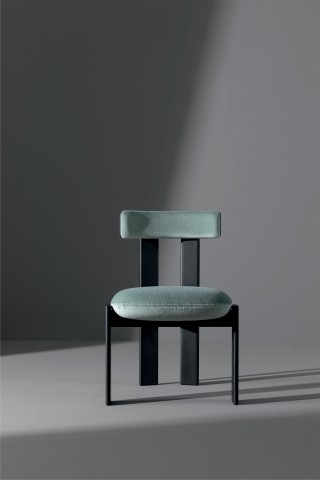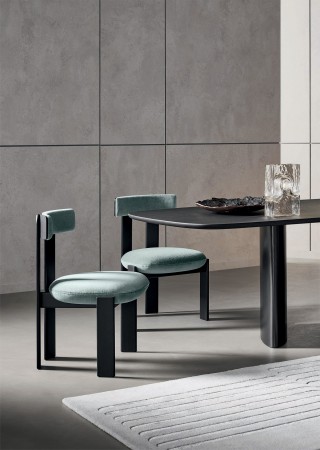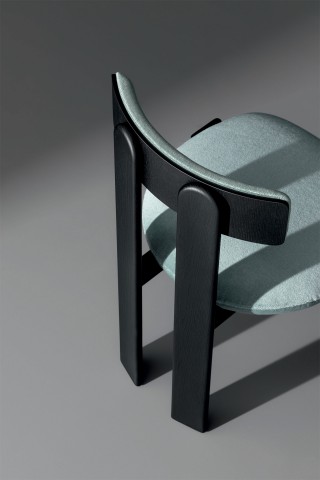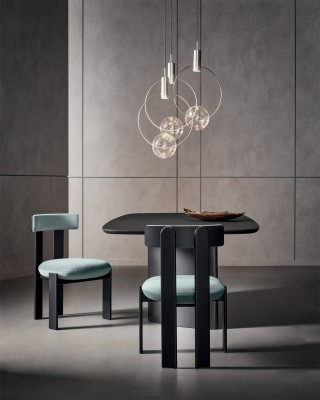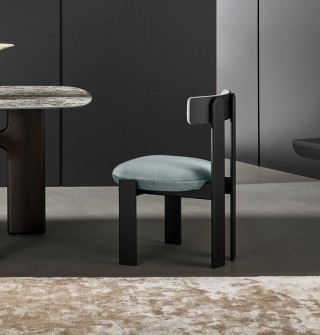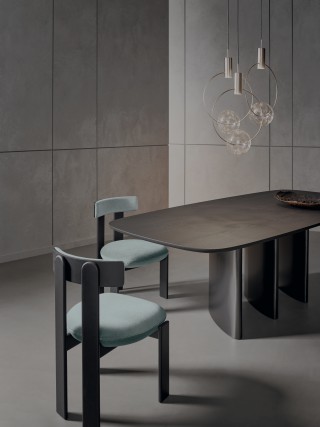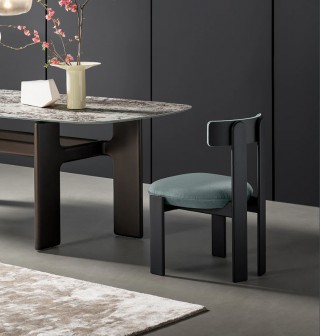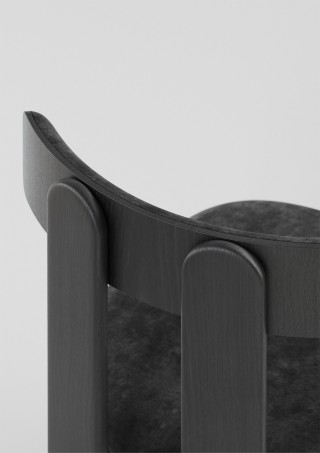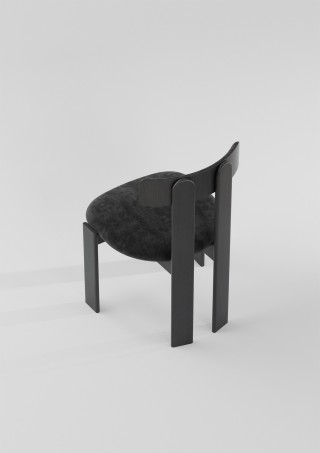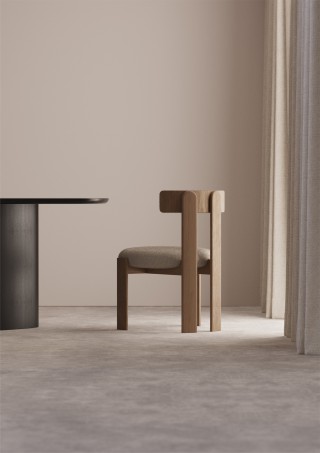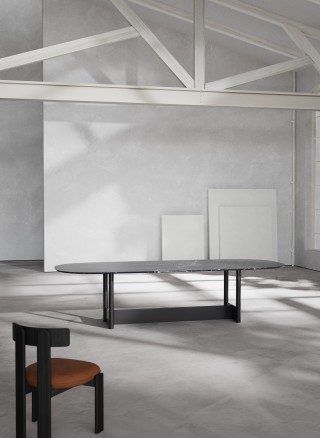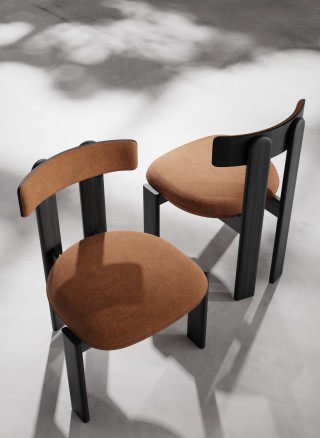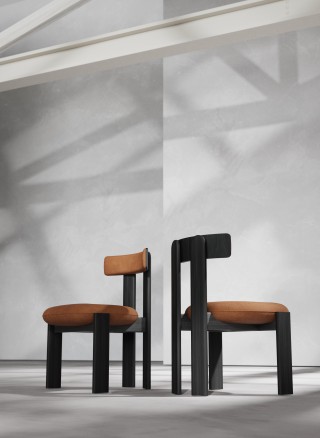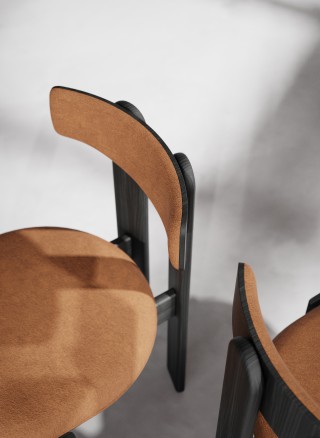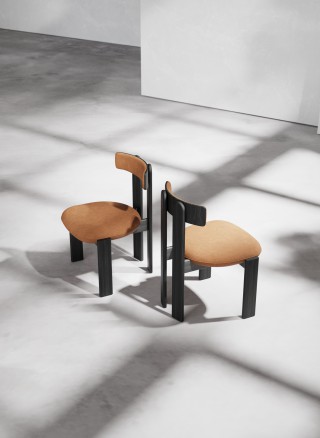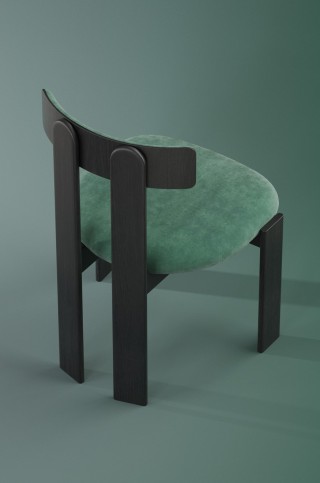PI CHAIR
BONALDO
The "Pi" chair is the result of two different worlds coming together. On the one hand the project is very rigorous, on the other hand it's full of generosity and warmth.
The chair is defined by a rigorous and graphic structure in solid wood, with a multitude of straight and parallel lines that echo each other. But this almost monachal structure is complemented and almost contradicted by bold curves and volumes that make the chair generous, welcoming and comfortable.
Its bold seat cushion has an oversized presence thanks to its unexpected thickness. It almost seems to merge with the wooden structure, as if it had somehow melted over the structure and had incorporated it, or simply as if had been inflated. As for the ergonomically curved back, it seems to want to embraces the person and offer the ade comfort.
The Pi chair is instantly recognizable thanks to its iconic backrest, reminiscent of the mathematical sign "Pi" and that acts as the visual node that connects all the elements of the chair. The chair has a very strong presence, especially from the back, which is, after all, the side it is most seen from when used around a table.
Its back legs are completely straight and visually linked to the horizontal backrest by a play of tangents. At the top of the backrest, the rounded ends of the legs create a very graphic connection with the top line of the backrest, creating a kind of graphic tension, a graphic tension that is also palpable in limited distance between both of its back feet. Although the wooden structure might seem very strict at first glance, it is more subtle than it appears, since all the elements used to build the structure have a rounded edge or rounded details.
The duality in the Pi chair results in a piece that is both architectural and ergonomic at the same time, or if you want, both masculine and feminine at the same time, as if opposites had attracted each other.
